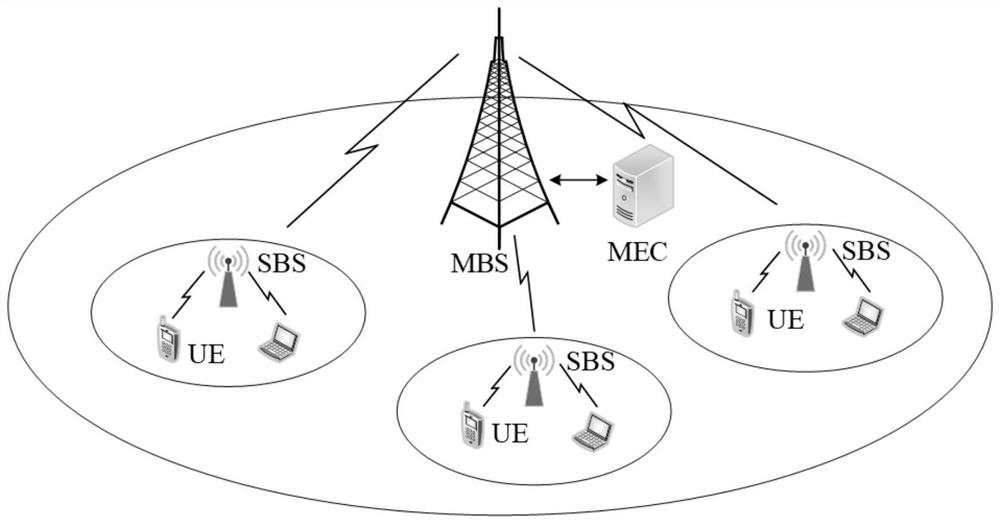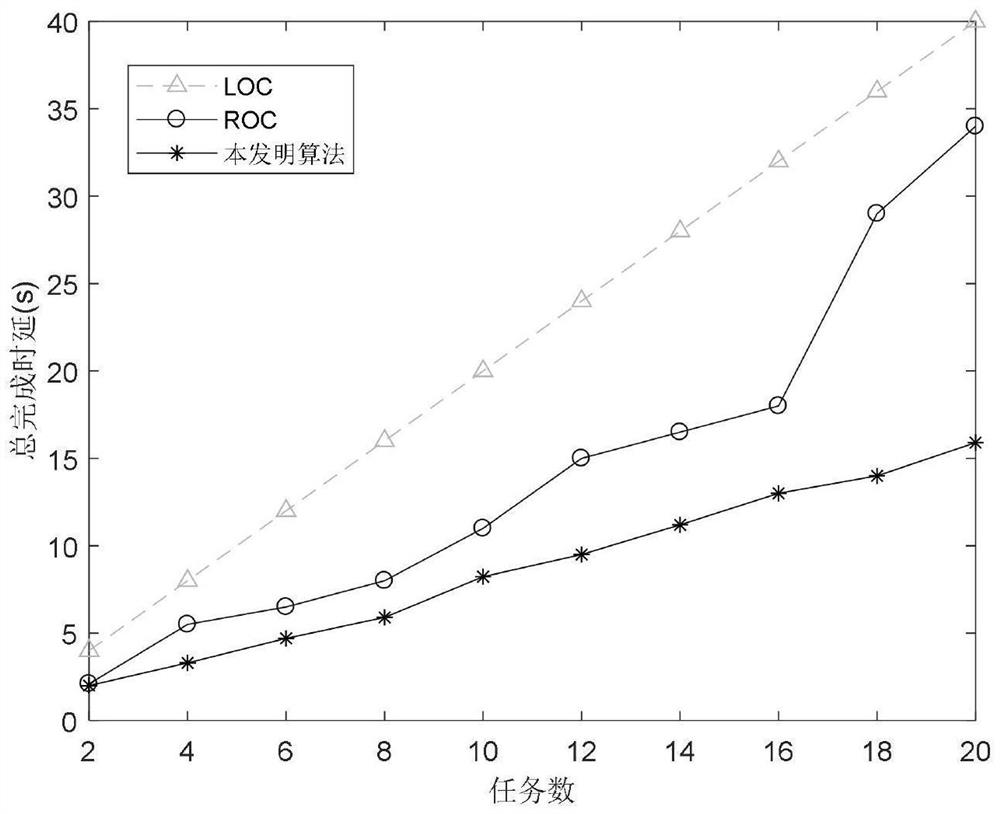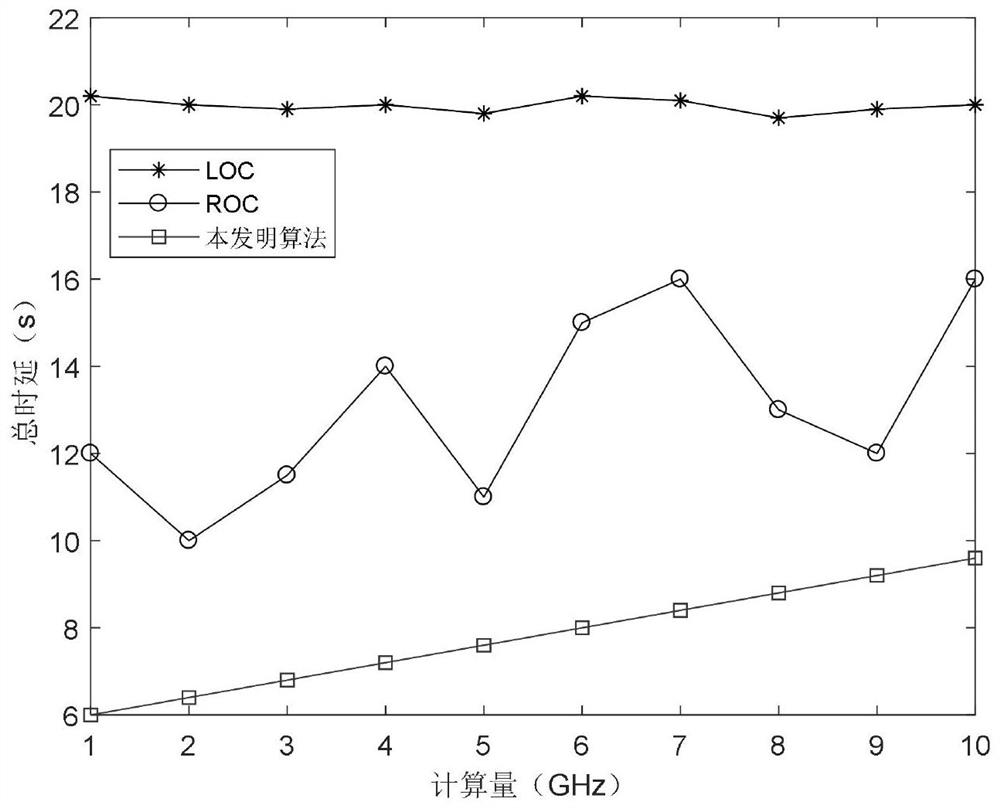Joint optimization method and device for task unloading and resource allocation in 5G ultra-dense network, and medium
An ultra-dense network and joint optimization technology, which is applied to the joint optimization of task offloading and resource allocation in 5G ultra-dense networks, devices and media. It can solve problems such as transmission rate drop and interference, reduce task completion delay, improve The effect of service experience
- Summary
- Abstract
- Description
- Claims
- Application Information
AI Technical Summary
Problems solved by technology
Method used
Image
Examples
Embodiment 1
[0098] The technical problem to be solved by the present invention is the task completion delay problem based on edge computing in the 5G ultra-dense network, and mainly solves the problem of resource allocation and offloading strategy faced by the user equipment when offloading tasks to the edge server.
[0099] Consider a UDN composed of a macro base station (Macro Base Station, MBS) and N small base stations (Small Base Station, SBS). The set composed of SBS is represented as S={1,2,...,S}. A MEC server is deployed in the macro base station. The MEC server has certain computing power and can process multiple computing tasks in parallel at the same time. The set of UEs served by each SBS is denoted as N={1,2,...,N s }, s∈S. The UE and the MEC server are connected through a wireless channel, and Orthogonal Frequency Division Multiple Access (OFDMA) is used as the user's multiple access method, and the bandwidth is divided into K orthogonal sub-channels. The set of sub-channe...
Embodiment 2
[0204] A joint optimization device for task offloading and resource allocation in a 5G ultra-dense network is provided, including:
[0205] Network establishment module: used to establish an OFDMA-based ultra-dense network scenario consisting of a macro base station and multiple small base stations, where MEC is deployed in the macro base station to support multi-user access;
[0206] Modeling module: used to obtain basic network information, the basic network information includes: local terminal computing capability, task average computation amount, data amount, MEC computing capability, number of channels, and channel bandwidth; Select the calculation delay of the task locally and when it is offloaded to the MEC, and calculate the system model and formula of the user's transmission rate, the transmission delay when the task is offloaded, and the total delay of the task offloading to the MEC server according to the Shannon formula;
[0207] Optimization function module: It is...
Embodiment 3
[0215] This embodiment provides a joint optimization device for task offloading and resource allocation in a 5G ultra-dense network, including a processor and a storage medium;
[0216] the storage medium is used for storing instructions;
[0217] The processor is operable according to the instructions to perform the steps of the method according to the first aspect.
[0218] The apparatus in this embodiment may be used to implement the method described in Embodiment 1.
PUM
 Login to View More
Login to View More Abstract
Description
Claims
Application Information
 Login to View More
Login to View More - Generate Ideas
- Intellectual Property
- Life Sciences
- Materials
- Tech Scout
- Unparalleled Data Quality
- Higher Quality Content
- 60% Fewer Hallucinations
Browse by: Latest US Patents, China's latest patents, Technical Efficacy Thesaurus, Application Domain, Technology Topic, Popular Technical Reports.
© 2025 PatSnap. All rights reserved.Legal|Privacy policy|Modern Slavery Act Transparency Statement|Sitemap|About US| Contact US: help@patsnap.com



